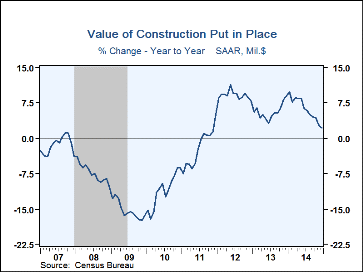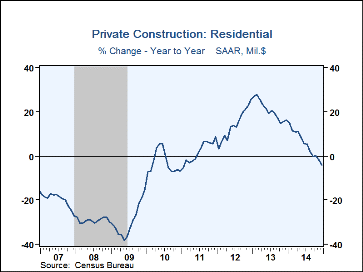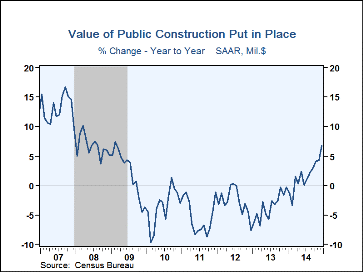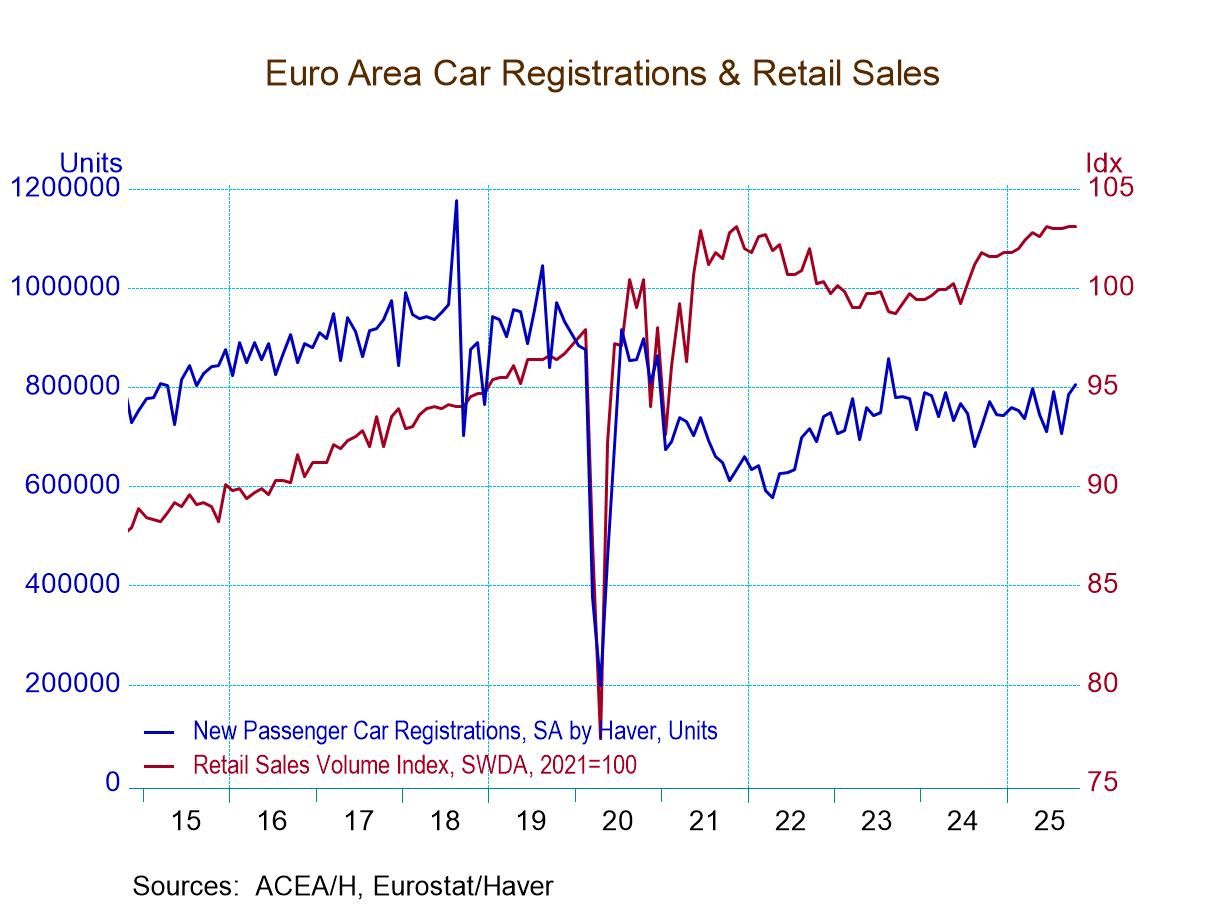 Global| Feb 02 2015
Global| Feb 02 2015U.S. Construction Spending Loses Strength During 2014
by:Tom Moeller
|in:Economy in Brief
Summary
The value of construction put-in-place increased 6.1% last year following a 5.7% rise in 2013. The rise was led by an improved 11.0% increase in nonresidential building activity followed by an easier 5.1% gain in residential building. [...]
The value of construction put-in-place increased 6.1% last year following a 5.7% rise in 2013. The rise was led by an improved 11.0% increase in nonresidential building activity followed by an easier 5.1% gain in residential building. Public sector building bounced 1.8% higher after declines in each of the prior four years. Construction activity lost strength, however, by year end as it improved 0.4% in December (2.2% y/y following a 0.2% decline. The rise compared to expectations for a 0.6% increase in the Action Economics Forecast Survey.
The annual gain in nonresidential building activity reflected a strong 18.7% rise in office construction as well as a 14.3% gain in power. For December alone, office building lost no momentum and gained 1.7% (17.6% y/y). Power construction, however, eased as the year progressed and was down 8.3% y/y. That followed gains of one-third earlier in the year. Growth in residential building activity slowed from a 20.4% rise in 2013 and a 14.4% increase in 2012. By yearend, very modest monthly increase left the twelve-month comparison at -4.0%. Much of that deterioration came as spending on improvements was off by roughly one-third y/y by the end of the year. Single-family building still was rising 11.0% y/y in December though that was down from a nearly one-third rise in 2013. Multi-family sector activity gained 11.0% during all of last year but momentum had slowed to 5.3% by year-end.
Public sector construction activity improved last year. Transportation building rose 10.7% y/y as of December and building of highways & streets, which accounts for 30% of all public sector building activity, rose 9.8% y/y. Transportation sector building rose 10.7% y/y by December and 4.5% for the full year.
The construction spending figures are in Haver's USECON database and the expectations figure is contained in the AS1REPNA database.
| Construction Put in Place (%) | Dec | Nov | Oct | Y/Y | 2014 | 2013 | 2012 |
|---|---|---|---|---|---|---|---|
| Total | 0.4 | -0.2 | 1.4 | 2.2 | 6.1 | 5.7 | 9.2 |
| Private | 0.1 | 0.5 | 0.4 | 0.4 | 7.9 | 10.1 | 16.0 |
| Residential | 0.3 | 0.1 | 0.4 | -4.0 | 5.1 | 20.4 | 14.4 |
| Nonresidential | -0.2 | 0.8 | 0.4 | 5.3 | 11.0 | 0.6 | 17.5 |
| Public | 1.1 | -1.8 | 4.1 | 6.7 | 1.8 | -3.5 | -2.8 |
Tom Moeller
AuthorMore in Author Profile »Prior to joining Haver Analytics in 2000, Mr. Moeller worked as the Economist at Chancellor Capital Management from 1985 to 1999. There, he developed comprehensive economic forecasts and interpreted economic data for equity and fixed income portfolio managers. Also at Chancellor, Mr. Moeller worked as an equity analyst and was responsible for researching and rating companies in the economically sensitive automobile and housing industries for investment in Chancellor’s equity portfolio. Prior to joining Chancellor, Mr. Moeller was an Economist at Citibank from 1979 to 1984. He also analyzed pricing behavior in the metals industry for the Council on Wage and Price Stability in Washington, D.C. In 1999, Mr. Moeller received the award for most accurate forecast from the Forecasters' Club of New York. From 1990 to 1992 he was President of the New York Association for Business Economists. Mr. Moeller earned an M.B.A. in Finance from Fordham University, where he graduated in 1987. He holds a Bachelor of Arts in Economics from George Washington University.










